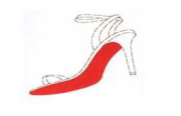Advocate General’s Opinion in Case C-163/16 Christian Louboutin, Christian Louboutin SAS v Van Haren Schoenen BV
According to Advocate General Szpunar, a trade mark combining colour and shape
may be refused or declared invalid on the grounds set out under EU trade mark law .
The analysis must relate exclusively to the intrinsic value of the shape and take no account of
attractiveness of the goods flowing from the reputation of the mark or its proprietor.
Mr Christian Louboutin is a fashion designer who designs, amongst other things, high-heeled
shoes for women. A particular feature of those shoes is that the outer sole is always red. Mr
Louboutin and his company registered that trade mark in Benelux for ‘footwear’ in 2010 and for
‘high-heeled shoes’ in 2013. The trade mark is described as consisting ‘of the colour red (Pantone
18 1663TP) applied to the sole of a shoe as shown (the contour of the shoe is not part of the trade
mark but is intended to show the positioning of the mark)’. It is reproduced below:

The Van Haren company operates shoe retail outlets in the Netherlands. In 2012, Van Haren sold
high-heeled women’s shoes with red soles. Mr Louboutin and his company brought proceedings
before the Netherlands courts seeking a finding of trade mark infringement by Van Haren. Van
Haren claims that the mark at issue is invalid. The EU trade mark directive sets out a number of
grounds on which registration of a mark may be refused or declared invalid, particularly in relation
to signs that consist exclusively of a shape that gives substantial value to the goods. The
Rechtbank Den Haag (District Court of The Hague, Netherlands) decided to refer questions to the
Court of Justice in that regard. The referring court considers that the mark at issue is inextricably
linked to shoe soles and that, according to the directive, the concept of ‘shape’ covers not only the
three-dimensional properties of goods (such as their contours, measurements and volume), but
also colours.
In his additional Opinion following the reopening of the oral procedure, Advocate General Maciej
Szpunar maintains his view that the prohibition set out in the trade mark directive is
capable of applying to a sign combining colour and shape. Accordingly, he proposes that the
Court’s answer should be that the grounds on which registration of a mark may be refused or declared invalid are capable of being applied to a sign consisting of the shape of the goods, and
seeking protection for a certain colour.
In his first Opinion, the Advocate General had stated that the mark at issue had to be equated with
one consisting of the shape of the goods, and seeking protection for a colour in relation to that
shape, rather than one consisting of a colour per se. He maintains that point of view, given that this
is not a wholly abstract shape, or one of negligible importance, but always the shape of a sole.
Moreover, he expresses doubts as to whether the colour red can perform the essential function of
a trade mark, that of identifying its proprietor, when that colour is used out of context, that is to say,
separately from the shape of a sole.
Nevertheless, the Advocate General points out, as he had done in his first Opinion, that the
classification of the mark at issue is a factual assessment to be made by the referring court. The
same applies to the question as to whether the red colour of the sole gives substantial value to the
goods. In his view, the position of the Netherlands court is clear on that point, since it is proceeding
from the premise that that question must be answered in the affirmative.
The Advocate General also considers that the introduction of the concept of a ‘position’ mark into
EU law3 is not liable to qualify his considerations concerning the applicability of the ground for
refusal or invalidity (laid down in the EU trade mark directive) to a sign such as that at issue.
Similarly, the Advocate General has examined the scope of the new trade mark directive, the
deadline for transposition of which is 14 January 2019. In that regard, he takes the view that the
reasons for the amendments introduced by the new directive (strengthening the trade mark
proprietor’s monopoly and restricting third party rights) cannot easily be applied to the grounds for
refusal or invalidity.
The Advocate General also takes the view that the reference to the public’s perception as a factor
which, among others, determines the characteristics giving substantial value to the goods, argues
in favour of the ground for refusal or invalidity applying to signs consisting of the shape of the
goods and seeking protection for a colour in relation to that shape. In practice, the deciding factor
in relation to the public’s perception is not the distinction between shape, colour or position marks,
but rather the identification of the origin of the goods on the basis of the overall impression created
by a sign.
With regard to the classification of the mark, the Advocate General points out that it is to be
assessed whether the registration of that sign would not run counter to the general interest in not
unduly restricting the availability of the characteristics represented by that sign for other operators
offering for sale goods or services of the same type.
Lastly, as he stated in his first Opinion, the Advocate General notes that his analysis relates
exclusively to the intrinsic value of the shape, and must take no account of attractiveness
of the goods flowing from the reputation of the mark or its proprietor.
Source: https://curia.europa.eu/jcms/jcms/p1_753541/de/
Court of Justice of the European Union, PRESS RELEASE No 11/18, Luxembourg, 6 February 2018, Advocate General’s Opinion in Case C-163/16
